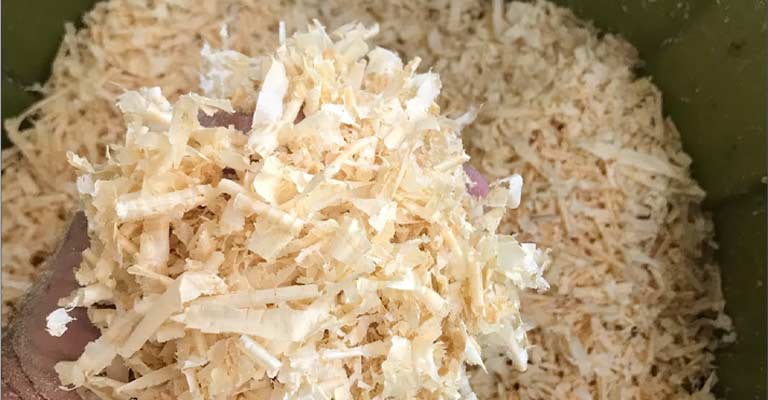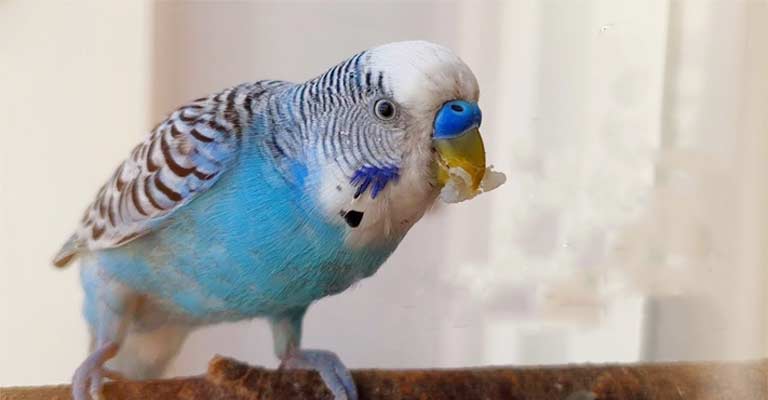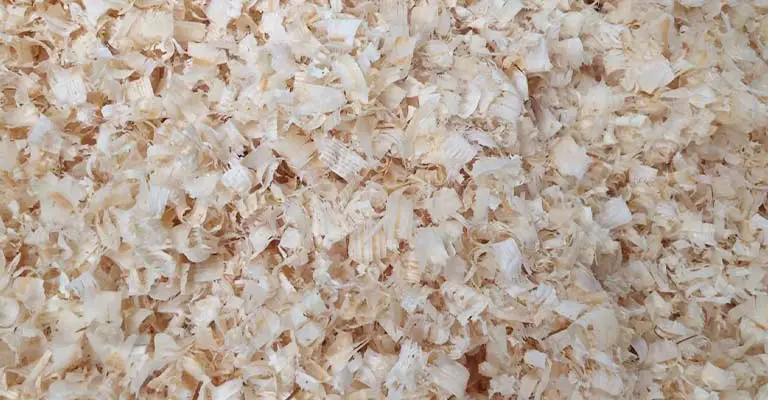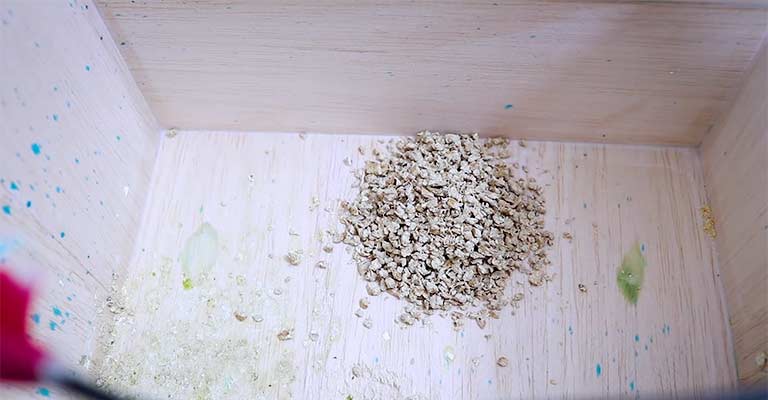Creating a cozy and comfortable environment is crucial for the well-being of your feathered friends. As a responsible parakeet owner, you may have considered various bedding options, and one material that often comes to mind is pine shavings.
Known for their absorbent and aromatic properties, pine shavings are commonly used as bedding for various pets. However, when it comes to parakeets, questions about safety and suitability arise.
In this article, we delve into the topic of using pine shavings as bedding for parakeets. We’ll explore the potential benefits and risks associated with this bedding choice, considering factors such as respiratory health, cleanliness, and overall avian satisfaction.
Whether you’re a new parakeet owner or a seasoned avian enthusiast, join us in understanding if pine shavings are a feather-friendly option for your delightful companions.

Can You Use Pine Shavings as Bedding for Parakeets?
As a responsible parakeet owner, creating a safe and comfortable environment for your feathered friends is paramount. Bedding choices play a crucial role in ensuring their well-being, and one material that often comes into consideration is pine shavings.
The Appeal of Pine Shavings
Pine shavings are popular as bedding material for various pets, thanks to their absorbent nature and pleasant scent. The aromatic properties of pine can help control odors and create a fresh atmosphere within the cage.
Additionally, pine shavings are readily available and cost-effective, making them an attractive option for pet owners.
Understanding the Risks

While pine shavings offer several advantages, concerns have been raised about their safety for parakeets. The primary issue lies in the aromatic compounds found in pine, specifically phenols.
These compounds, released as a natural defense mechanism by pine trees, can potentially affect the delicate respiratory systems of birds.
Parakeets are known for their sensitive respiratory systems, and exposure to airborne irritants can lead to respiratory issues.
Prolonged exposure to phenols in pine shavings may contribute to respiratory distress, making it crucial for owners to carefully consider the potential risks before opting for this bedding material.
Respiratory Health Considerations
Parakeets are prone to respiratory problems, and any bedding choice should prioritize their respiratory well-being.
If you choose to use pine shavings, it’s essential to monitor your parakeets for signs of respiratory distress, such as wheezing, labored breathing, or nasal discharge. If any of these symptoms occur, it may be an indication that the pine shavings are not suitable for your birds.
Alternatives to Pine Shavings
For parakeet owners seeking alternative bedding options, several safe and suitable choices exist. Aspen shavings, for example, are a popular alternative known for their low levels of aromatic compounds.
Paper-based products, such as shredded paper or recycled paper bedding, are also excellent options that provide a soft and comfortable surface for your parakeets.
Making an Informed Decision
When deciding on bedding for your parakeets, it’s crucial to weigh the benefits and risks of each option. If you opt for pine shavings, choose a kiln-dried variety, as this process helps reduce the concentration of phenols.
Additionally, providing ample ventilation in the cage can help minimize the potential for respiratory issues.
Regular cage cleaning is essential, regardless of the bedding material chosen, to maintain a hygienic environment for your parakeets. Remove soiled bedding promptly, and ensure that the cage is well-ventilated to prevent the buildup of harmful airborne particles.
Observing Parakeet Behavior
Parakeets are excellent communicators, and their behavior can offer valuable insights into their comfort and well-being. If you introduce pine shavings as bedding, observe your parakeets closely for any changes in behavior.
Signs of contentment, such as playful chirping and active engagement, suggest that the bedding is well-received.
On the other hand, if your parakeets show signs of discomfort, such as increased sneezing or reduced activity, it may be an indication that the bedding choice needs reconsideration.
While pine shavings offer benefits such as absorbency and a pleasant scent, the potential risks to respiratory health cannot be overlooked.
Whether you choose pine shavings, aspen shavings, or paper-based bedding, regular monitoring and responsiveness to your parakeets’ needs are key.
By maintaining a clean and comfortable environment, you can ensure that your parakeets thrive and continue to bring joy and vibrancy to your home.
What Is the Best Nesting Material for Parakeets?

Creating an ideal nesting environment is crucial for the well-being of your parakeets, especially if you’re planning to breed them. The right nesting material not only provides comfort but also plays a key role in ensuring the safety and health of the nesting pair and their chicks.
Let’s explore various options and considerations to help you choose the best nesting material for your parakeets.
Untreated Paper
Untreated, plain paper is a popular and safe nesting material for parakeets. You can provide shredded or crinkled paper to allow your birds to build a cozy nest. Avoid colored or glossy paper, as the inks or coatings may contain chemicals that can be harmful.
Dry Grass or Straw
Parakeets may appreciate the natural feel of dry grass or straw in their nests. Ensure it is clean and free from pesticides. While some parakeets may not show interest in this material, others may find it appealing.
Soft Twigs and Leaves
Offering soft twigs and leaves can mimic the natural nesting materials parakeets might use in the wild. Make sure they are free from pesticides and thoroughly cleaned before placing them in the cage.
Commercial Nesting Pads
Specialized nesting pads made from materials like coconut fiber or hemp can provide a convenient and safe option for parakeets. These pads are designed to be comfortable and are often easy to clean.
Cotton Nesting Material
Some bird owners choose to provide cotton nesting material, which can be especially enticing for parakeets. Ensure the cotton is untreated and free from any dyes or chemicals that could be harmful.
Fiber Nesting Mats and Egg Carton Bedding
Fiber mats made from natural materials can be a good option. These mats are often easy to clean, and parakeets may find them comfortable for nesting.
Cut egg cartons into small sections to create a DIY nesting material. Parakeets can shred and rearrange the carton pieces to suit their nesting preferences.
Toilet Paper Rolls and Natural Fiber Strings
Empty toilet paper rolls can be cut into rings and provided as nesting material. Parakeets may enjoy rearranging the rings and creating a snug nest.
Untreated natural fiber strings, such as sisal, can be offered as nesting material. Ensure the strings are of a length that won’t pose a tangling risk to the birds.
Cotton Nesting Material
Soft and easily moldable, cotton nesting material is a favorite among parakeet breeders. It provides a comfortable foundation for the nest and is readily accepted by many parakeet pairs. Ensure it is free from loose threads to prevent any entanglement.
Fleece Strips
Cut the fleece into strips to create a soft and warm nesting material. Fleece is easy to clean and can be reused, making it a practical choice. Be cautious about providing large pieces to avoid the risk of entanglement.
Commercial Nesting Liners
Specifically designed for bird nesting, commercial liners offer convenience and hygiene. They are often made from safe materials and provide an easy-to-maintain option for your parakeet’s nest. Ensure they are non-toxic and suitable for bird use.
Considerations When Choosing Nesting Material

While choosing the nest material, here’s what you need to consider:
Safety First
Always prioritize the safety of your parakeets. Avoid materials with chemicals, pesticides, or artificial additives that could be harmful to your birds or their chicks.
Texture and Comfort
Parakeets have preferences for different textures. Provide a variety of materials and observe which ones your birds prefer. Soft and pliable materials are generally well-received.
Ease of Cleaning
Choose nesting materials that are easy to clean or replace. Maintaining a clean nesting environment is crucial for the health of the nesting pair and their chicks.
Observing Natural Behavior
Pay attention to your parakeets’ natural behavior. Some may be more inclined to shred materials, while others may prefer arranging softer options for nesting.
Avoiding Hazards
Steer clear of materials that could pose hazards, such as long strings that may lead to entanglement. Opt for materials that encourage natural nesting behaviors without unnecessary risks.
Finding the best nesting material for your parakeets involves considering their safety, comfort, and instincts.
Experiment with a variety of options to determine what suits your birds best, and always monitor their behavior to ensure a positive nesting experience.
FAQs
Are Pine Shavings Safe for Parakeets?
While pine shavings are commonly used as bedding for various pets, including birds, their safety for parakeets is debatable. The aromatic compounds in pine, known as phenols, can pose a risk to the sensitive respiratory systems of parakeets.
How Can I Minimize the Risks of Using Pine Shavings?
To minimize the risks associated with using pine shavings, opt for kiln-dried varieties, as this process helps reduce the concentration of phenols. Additionally, ensure proper ventilation in the cage to decrease the potential for airborne irritants.
What Are Safer Alternatives to Pine Shavings?
If you’re concerned about the potential risks of pine shavings, consider alternative bedding options. Aspen shavings are known for their low levels of aromatic compounds and can be a safer choice for parakeets.
How Can I Monitor My Parakeets for Respiratory Issues?
Monitoring your parakeets for respiratory issues involves observing their behavior and physical signs. Look for symptoms such as wheezing, labored breathing, or nasal discharge. Additionally, pay attention to changes in activity levels and vocalizations.
Can I Mix Different Bedding Materials for My Parakeets?
Yes, you can mix different bedding materials for your parakeets to provide a comfortable and varied environment. For example, you might use a combination of aspen shavings and paper-based bedding.
Conclusion
In the realm of parakeet care, the choice of bedding plays a pivotal role in fostering a secure and healthy habitat.
While pine shavings offer absorbency and a pleasant aroma, it’s crucial to weigh the potential risks associated with this material.
Considering the diverse needs of parakeets, alternative bedding options such as paper-based products or aspen shavings may be safer choices.
Always prioritize your pets’ well-being by monitoring their behavior, respiratory health, and overall comfort when introducing any new bedding.
While pine shavings have been widely used for various pets, it’s essential to exercise caution and make an informed decision based on your parakeets’ specific requirements.
By staying attuned to their needs and preferences, you can create an environment that not only supports their health but also enhances the bond between you and your vibrant feathered companions.